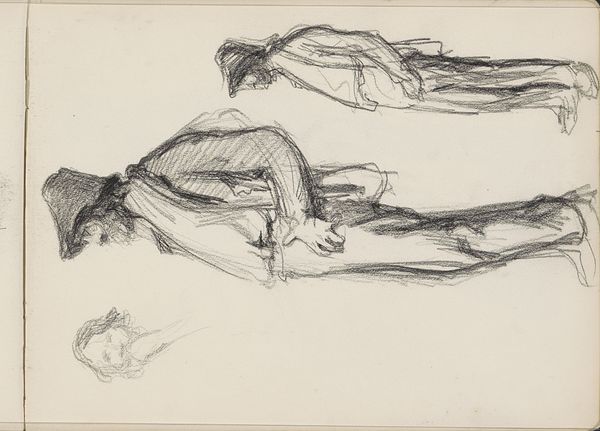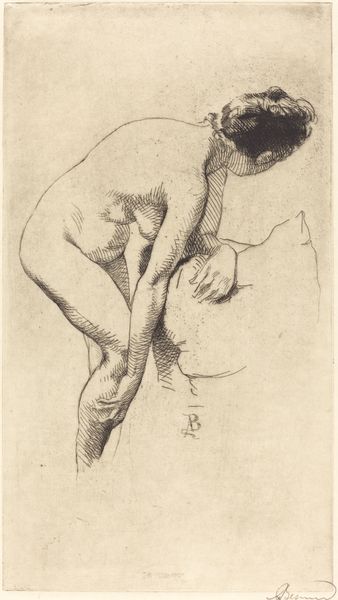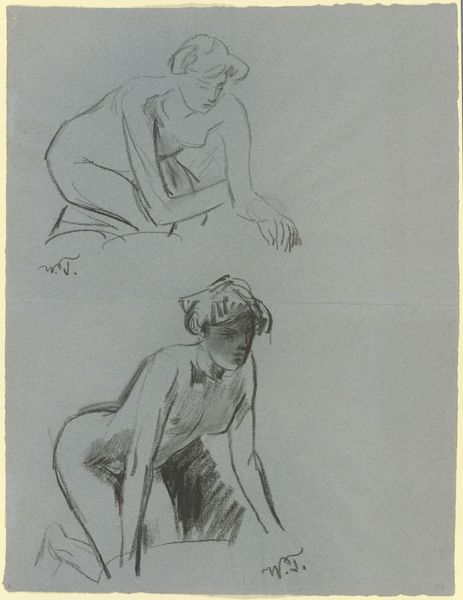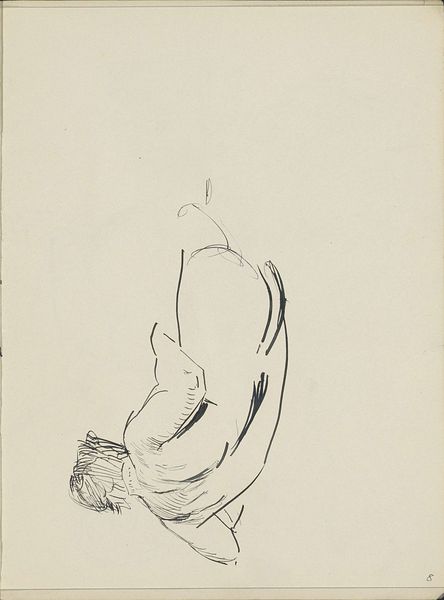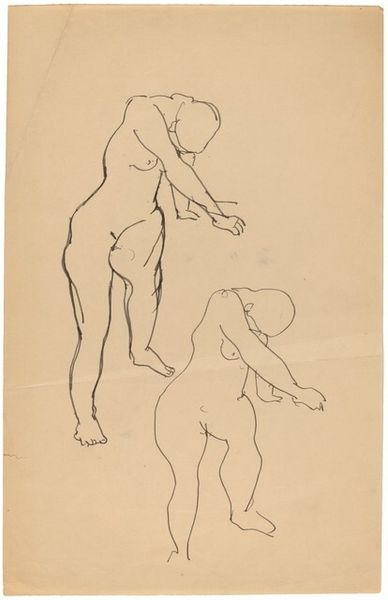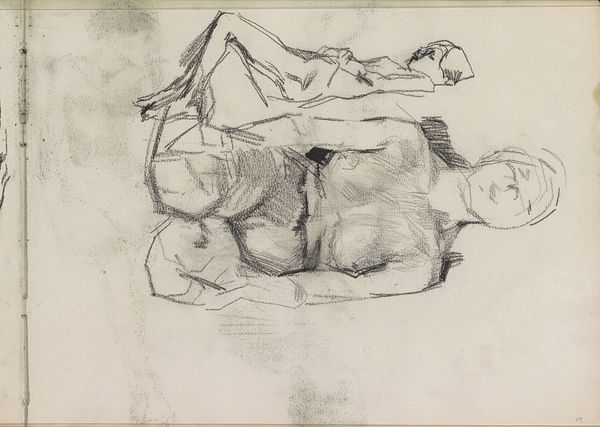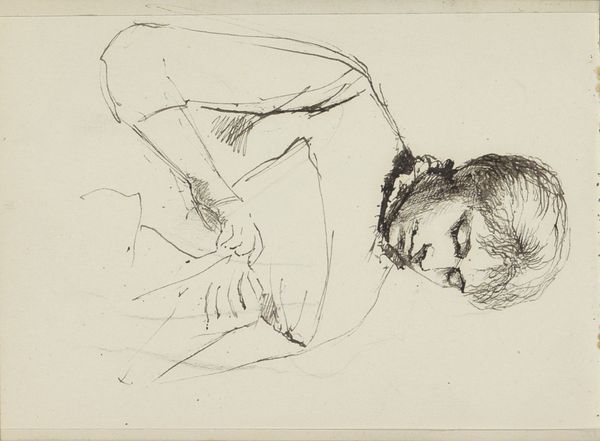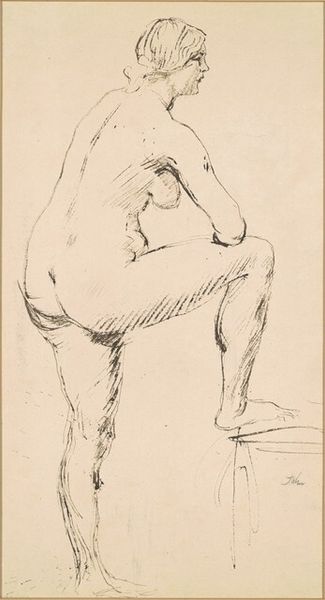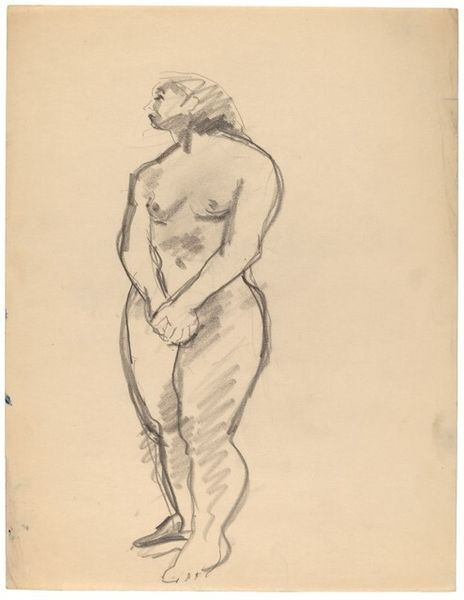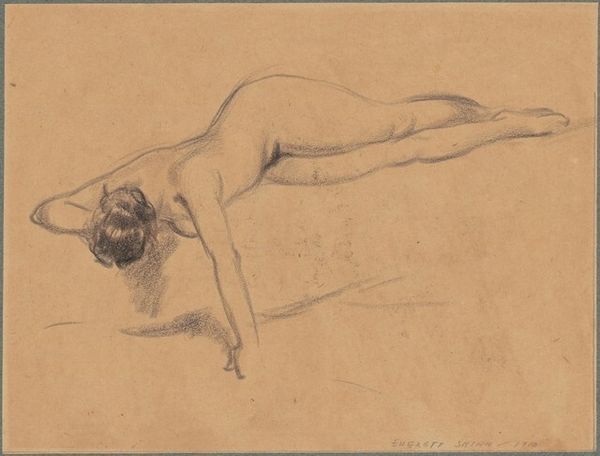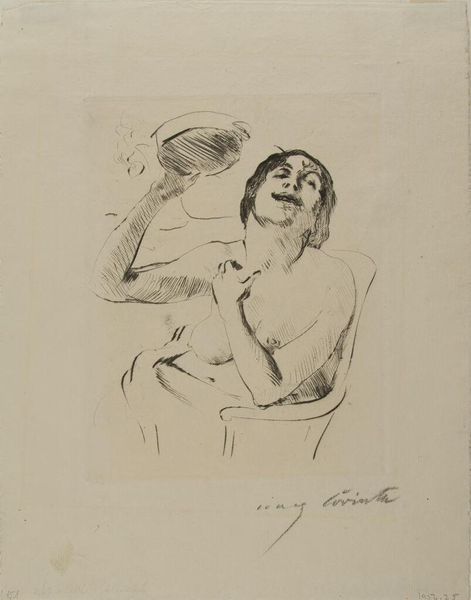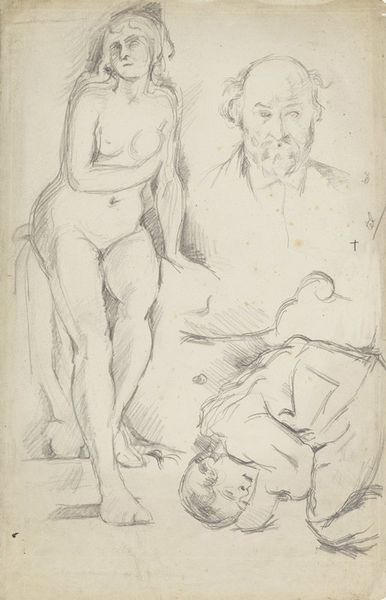
Copyright: Public Domain: Artvee
Curator: Looking at this drawing by Édouard Vuillard, “Two Nude Figure Studies,” likely made between 1900 and 1905, I am struck by the lightness of the figures, almost like ghosts on the page. Editor: It feels immediate, almost like catching a glimpse, fleeting and unposed. Is there something about the material quality or the social moment it captures that resonates with you? Curator: Absolutely. Vuillard, as a member of the Nabis group, blurred the lines between fine art and decoration, elevating everyday life to the realm of art. This sketch, made with pencil and graphite, focuses on the simple labor and the material of creating nudes for academic studies. The social context here revolves around production—what kind of labor goes into learning how to produce paintings in art academy circles at the time? Editor: These were also figures situated within evolving social expectations of women and their bodies. Did Vuillard explore those themes intersectionally in other drawings from this period? This feels less a celebration of the female form, as the viewer’s gaze is positioned somewhat ambiguously. It's neither entirely empathetic nor objectifying but exists in an interesting middle space. Curator: Exactly, and that tension might speak to the shifting relationship between artist, model, and patron at the turn of the century, the very beginnings of the era of commodity production of images. How do you perceive the relationship between the two figures depicted on the page? Does one have dominance over the other? Editor: Perhaps their relationship exists more within the visual space created by Vuillard. The arrangement and scale seem almost dreamlike, where traditional power dynamics are not the first thing the drawing intends to present. The work itself is evidence of an academic practice that continues into our contemporary moment. I wonder what the contemporary version looks like? Curator: Thinking about the commodification of the body—the relationship between seeing and consumption, making these studies makes you see the construction of taste in a fresh way. Thank you. Editor: Indeed. And examining how we see through historical and social lenses reveals how much art asks us to grapple with cultural forces at play, both then and now.
Comments
No comments
Be the first to comment and join the conversation on the ultimate creative platform.

